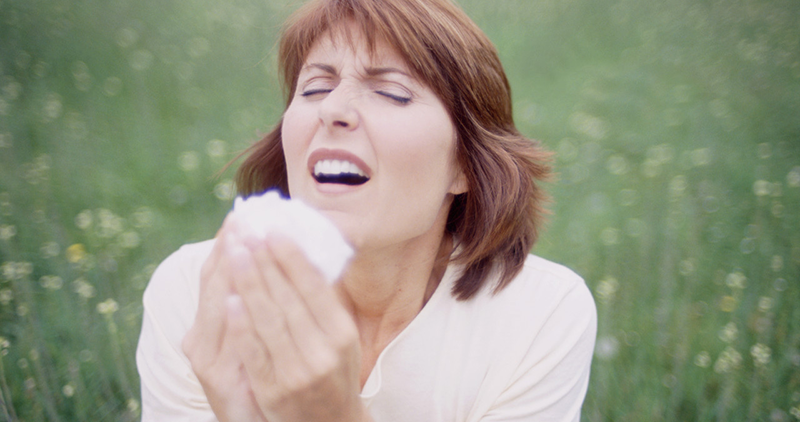Why Fall Allergies Make You Sneeze

The grass is dying, the flowers are gone, the leaves are falling. So why do we sneeze in the fall? Learn why fall allergies make you sneeze.
When you have seasonal allergies, April and May aren’t necessarily the cruelest months. September and October can be equally brutal. Sneezes, sniffles, and a runny nose in autumn may be signs you suffer from fall allergies.
While tree pollens generally trigger spring allergies, weeds are generally the culprits in the fall. Ragweed is especially prevalent in the cooler autumn weather, reaching its peak levels in mid-September.
“A single ragweed plant may release one million pollen grains in just one day,” said allergist Richard Weber, MD, past president of the American College of Allergy, Asthma, and Immunology. He adds that mold spores are also prevalent at this time of year.
Plants like sagebrush, mugwort, thistle, pigweed, and cocklebur are other fall sneeze starters. These allergens can stick around until the first frost sets in.
Once the weather gets cooler and people move inside, exposure to dust, mold, and other indoor allergy triggers increase.
YOU MIGHT ALSO LIKE: Sinus Infection Symptoms or Allergies?
Do I have fall allergies?
While springtime sniffles are often immediately attributed to allergies, people may mistake their fall symptoms for a respiratory infection because the conditions share so many common symptoms.
How do you tell the difference?
“This time of year, people often are not sure if they are suffering from allergies, a cold, or coming down with the flu,” said Dana Evans, MHA, director of respiratory care at Children’s Hospital of Chicago, Ill. “Common symptoms include coughing, sneezing, headaches, or runny nose. However, allergies do not cause fevers or body and muscle aches. That would be a sign that it is a cold, flu, or virus.”
Symptom duration also differs between a virus and allergies. While a respiratory infection will usually clear up in a few days, allergy symptoms can linger for weeks.
Taming your fall allergy triggers
You should start efforts to reign in fall allergies long before the season does. First, find a good allergist you trust, and get tested to find out exactly which substances cause you distress. Your doctor can apply bits of the allergen under the surface of your skin to see which ones cause a reaction.
Ask the doctor whether you need allergy shots, called immunotherapy, which gradually exposes your body to increasing amount of the allergen to increase your tolerance to it.
“Allergy shots can provide symptom relief while preventing and modifying progression of hay fever,” said Weber. “This form of treatment can also prevent the development of asthma and other allergies.”
Once you know your allergy triggers, practice avoidance techniques. If a plant like ragweed bothers you, close your windows to keep it outdoors. To prevent dust mites from gathering, vacuum often, wash your bedding in hot water, and encase your mattresses and pillows in mite-proof covers. Install a dehumidifier in your house to limit mold growth.
For pet allergies, buy a high-efficiency particulate air (or HEPA) cleaner and wash your dog often or put your cat outside to keep dander out of the air.
So that you don’t bring outdoor allergies into your home, take off your clothes and wash them whenever you’ve been doing yard work or other outdoor activities. Also wash your body to remove any allergen particles that might have stuck to you.
If you’ve done everything you can to keep allergies at bay and they still show up in the fall, try medicines to control their symptoms. Antihistamines such as loratadine (Claritin), fexofenadine (Allegra), diphenhydramine (Benadryl), and cetirizine (Zyrtec) block the chemical that triggers allergy symptoms to relieve stuffed, runny noses and sneezing. Some antihistamines, however — especially older ones like Benadryl — can make you drowsy.
Decongestants like pseudoephedrine (Sudafed) bring down nasal congestion. Some allergy medicines, including Zyrtec-D and Claritin-D, combine an antihistamine and a decongestant. Finally, steroid sprays such as mometasone (Nasonex), fluticasone propionate (Flonase), and budesonide (Rhinocort Aqua) reduce swelling in your nose to relieve congestion.
All of these medicines are available at your local pharmacy and grocery store or with a prescription from your doctor.
Updated:
September 01, 2023
Reviewed By:
Janet O’Dell, RN